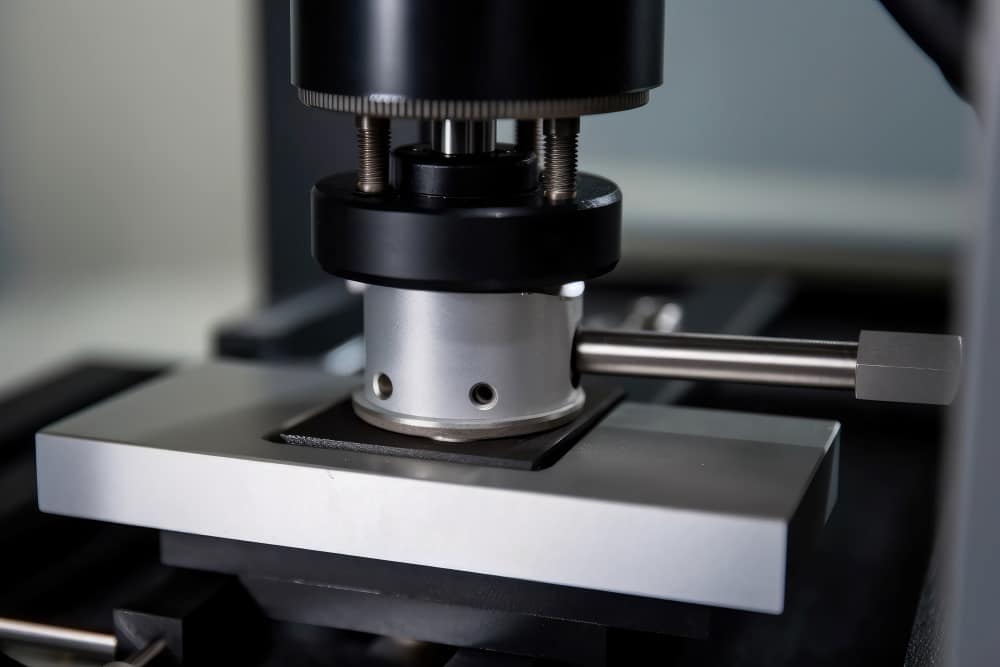
Load cells, like many devices, can sometimes experience something called “creep.” This is when the output signal gradually shifts over time, even if the load stays the same.
At first, this may seem like a small issue, but in industries like manufacturing, transportation, and research, even tiny errors can lead to big problems.
That’s where load cell creep compensation comes in. By identifying the causes of creep and finding ways to reduce its effects, engineers can make sure that load cells continue to give accurate, reliable readings, even in tough environments.
In this article, we’ll dive into how creep compensation works, why it’s so important, and the methods used to keep force and weight measurement systems accurate over the long term.
What is Load Cell Creep?
Imagine you have a rubber band around a heavy box. At first, the rubber band is tight, but over time, it starts to sag a little even though the weight of the box hasn’t changed. This slow change is what happens with load cell creep.
A load cell is a device that measures force by converting it into an electrical signal. When a load cell is under a constant weight or pressure, its signal can change over time, even if the load itself is steady. This gradual change is called creep.
Creep is measured as a small percentage of the weight being applied over a period of time. It might seem like a small issue but it can affect how accurately the load cell measures weight, especially when precision is required.
What Causes Load Cell Creep?
Creep happens because of how materials behave under pressure. When a load cell carries weight for a long time, its internal components can deform slightly, causing the signal to drift.
Here are some common causes of load cell creep:
Temperature changes
If the environment gets hotter or colder, it can affect how the materials inside the load cell behave.
Humidity
Moisture in the air can also affect the load cell’s performance.
Uneven loads
If the weight isn’t applied evenly to the load cell, it can exaggerate creep.
What’s the big deal? Well, creep can cause measurement errors.
For example, if a load cell is used to weigh a truck, creep could cause the reading to slowly drift over time even if the truck hasn’t moved.
This can affect the reliability of measurements in industries like farming, construction or manufacturing.
What is Load Cell Creep Compensation?
Load cell creep compensation is a method to reduce or eliminate the gradual change in a load cell’s output signal when a constant load is applied over time. This change is called creep and is due to the natural behavior of materials under sustained load. Compensation techniques ensure the load cell’s measurements are accurate and reliable even in applications where the load is static for a long time.
Why is Creep Compensation Important?
Creep can introduce errors in force or weight measurements, especially in scenarios where the load is static for a long time. For example:
- Industrial scales weighing heavy materials may show a gradual drift in readings.
- Precision manufacturing processes require measurements to be stable over time.
By compensating for creep, engineers can keep the system reliable and accurate, which is critical for industries like agriculture, construction, manufacturing and transportation.
How Does Load Cell Creep Compensation Work?
Creep compensation addresses the issue by counteracting the factors causing the signal drift. There are a few common methods:
1. Material Selection
- Using advanced materials with minimal creep properties reduces the inherent deformation over time. For example:
- High-grade alloys for load cell elements.
- Improved adhesive materials for strain gauges.
2. Strain Gauge Design
- Optimized strain gauge patterns and bonding techniques can reduce creep.
- Some load cells have multiple strain gauges to balance and reduce signal drift.
3. Electronic Compensation
- Signal processing algorithms can adjust the output to compensate for creep.
- Modern load cell amplifiers and indicators have built-in creep compensation.
4. Temperature and Environment Controls
- Stabilize the environment like temperature and humidity.
- Thermal compensation techniques are used to counteract temperature-induced material changes.
5. Calibration and Adjustment
- Load cells can be calibrated to compensate for creep so the output matches the expected performance.
- Recalibration periodically to maintain the compensation.
Effective Strategies to Minimize Load Cell Creep and Ensure Accurate Measurements
When using a load cell, the quality of the signal is key to getting accurate measurements. If the signal is weak, noisy or inconsistent, it can cause errors that can disrupt your processes. Let’s go through what affects load cell signals and how you can improve them for reliable and precise performance.
- Electrical Noise: Interference from nearby electrical equipment can cause the signal to be noisy.
- Poor Connections: Loose or corroded connectors can cause signals to be inconsistent.
- Incorrect Wiring: Faulty wiring can cause weak, intermittent, or inaccurate signals.
- Environmental Conditions: Extreme temperatures, humidity and vibrations can affect the signal.
- Overloaded or Damaged Load Cells: Excessive weight or wear can affect performance.
How Can We Minimize Load Cell Creep?
Luckily, there are ways to reduce the creep. Here’s how:
- Control the environment: Keep temperatures stable and protect the load cell from humidity and static electricity.
- Choose the right load cells: Some load cells are designed to handle creep better. For example, those with well-arranged strain gauges (the part that measures force) can reduce the problem.
- Test for creep: Using two load cells and comparing their signals under the same load/time profile can help you identify which one performs better under your conditions.
- Stable connections: Strain gauges with good connectors will ensure the signal doesn’t drift unnecessarily.
Creep might seem like a small issue, but for industries that rely on accurate force measurements, it’s a big deal.
By understanding what causes load cell creep and how to minimize its effects, engineers and users can keep their systems running smoothly.
Stay Ahead with the Latest in Load Cell Technology – Explore More Insights Now!
To keep your load cell system performing at its best, it’s important to stay on top of the factors that can affect its accuracy. By regularly monitoring and making adjustments, you can ensure that your measurements stay reliable over time.
Looking ahead, the future of load cell technology lies in improving materials and designs to reduce creep further.
Whether you’re measuring truckloads or designing cutting-edge equipment, knowing about creep will help you make smarter choices for accurate and reliable measurements.
For more insights on load cells and industrial weighing solutions, explore our other articles at our blog.


